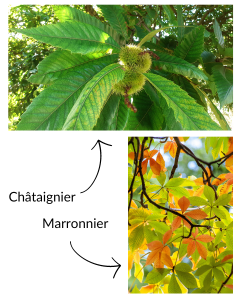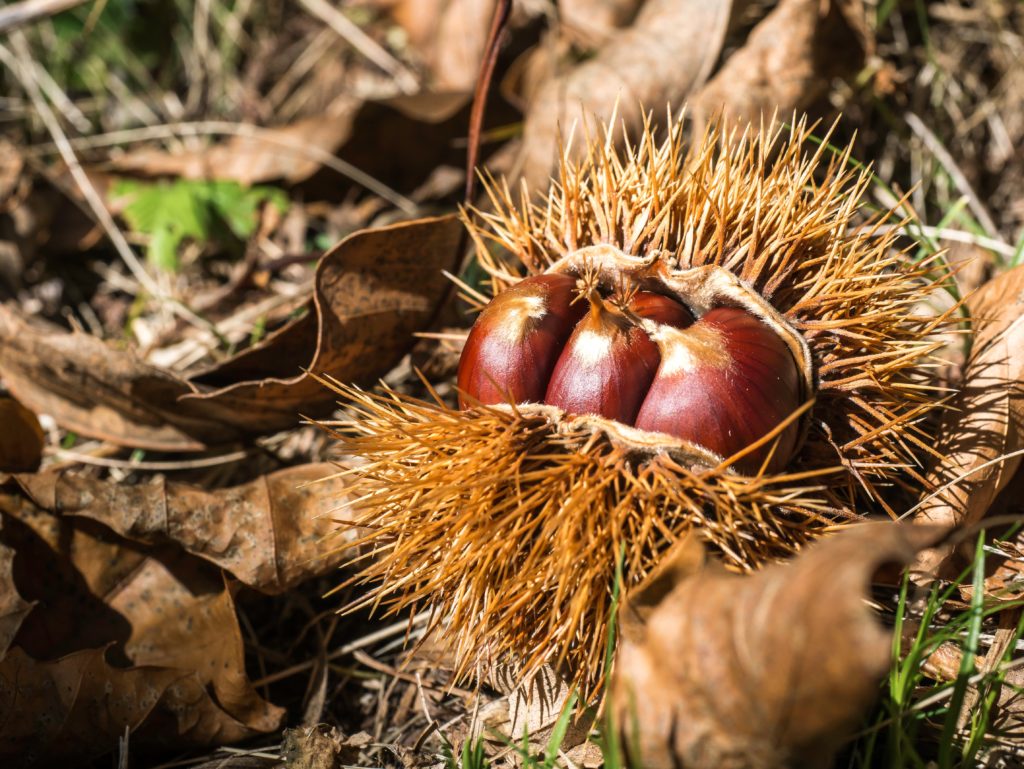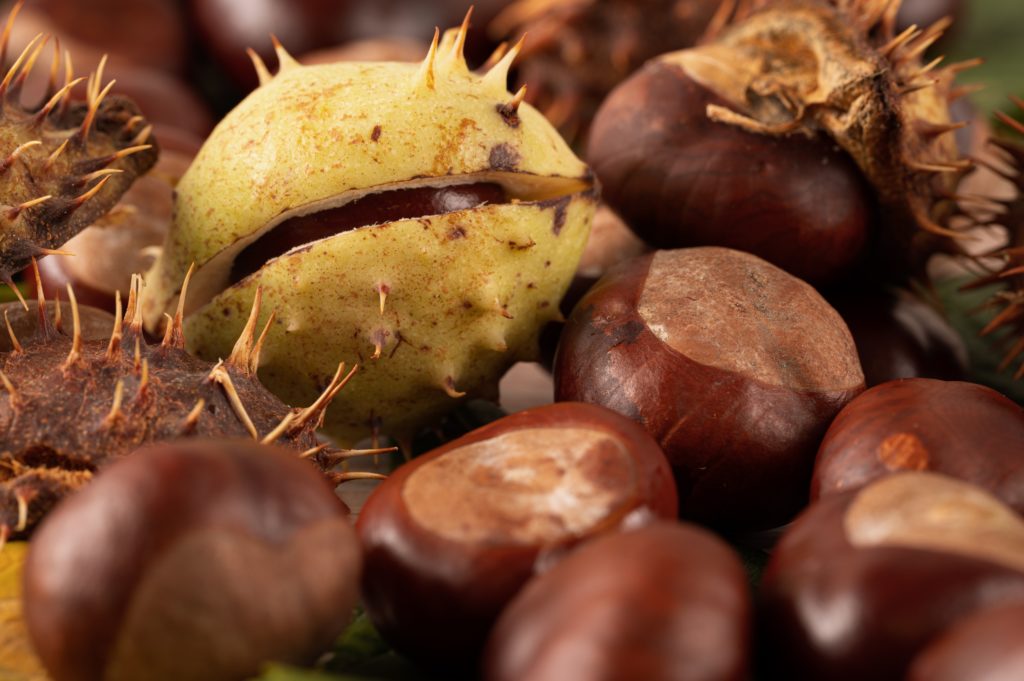Chestnuts and marrons: important differences
12 December 2023
Chestnuts and marrons are two names regularly used to designate the fruit of the chestnut tree. Chestnuts are commonly used for raw products (e.g. frozen chestnut pieces) and marrons for processed products (e.g. chestnut cream, chestnut pan). But beware: the real “marron”, the seed of the horse chestnut tree, is poisonous.
Chestnuts and marrons, what’s the difference?
It is essential to distinguish chestnuts from marrons.
First, the tree:

Chestnuts are the fruit of the chestnut tree (Castanea sativa), a member of the Fagaceae family (oaks, beeches). It is found mainly in forests, woods and orchards, and its leaves are elongated. Marrons is the seed of the horse chestnut tree (Aesculus hippocastanum), found mainly in towns and cities (parks, alleys and courtyards). Its leaves are made up of several leaflets.
The bur :
A natural protection for the fruit or seed, the chestnut bur is covered with spikes, like sea urchins. Brown in color when ripe, they contain several fruits (2 to 4), which are small, triangular and flattened. Edible marrons are a type of chestnut grown by castaneiculturists. It’s a man-modified version with larger fruits, usually only 1 per bur, which has the same characteristics as chestnuts.


The horse chestnut, which is poisonous, has a green boll with short, spaced spikes. It turns brown once dropped and contains a single, rounded fruit.
While chestnuts are a pleasure to eat and a delight for children and adult at the end of the year, horse chestnuts can cause intestinal problems and irritation, and it’s important to contact the poison control center if ingested.
What about regulations?
To this day, legally speaking, the mention of “chestnut” or “marront” is left to the free interpretation of each. However, in France, the CTIFL (Centre Technique Interprofessionnel des Fruits et Légumes) recommends the appellation “marron” when there is an average of less than 12% of partitioned fruits.
Need to know more about our frozen chestnuts?
